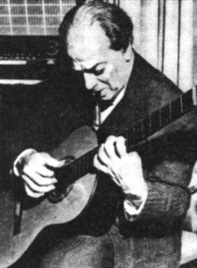 |
| Chagall |
What can art compete with the music? No need for translation, learning, knowledge, music, universal art speaks directly to the instincts, our passions, our dreams, our sensitivity is the gaze of the unconscious on the visible and invisible, force and energy of the universe.
Since that composers have slowly detached from the sacred to invest the lushness of the land lay, besides offering an alternative approach to the sacred, musical works have become major lighthouses and landmarks inevitable accompanying changes deep in our societies.
At the end of the nineteenth century as at the beginning of the twentieth century the greatest composers of music have changed decisively, sensing the turmoil unheard that would take place! There was a light side and a thirst for elevation rarely achieved and the other a tragic and shocking painting of our world, all delivered in a seamless hope instilled by these geniuses of music to their audience captivated : as Mahler (1888-1910), Prokofiev (1891-1953), and Shostakovich (1906-1975).
Stravinsky felt that old Europe was cracking on all sides and that there would be the emergence of an extraordinary revival of a "spring" to like no other. Moreover, illustrating "The Rite of Spring" in the animated film "Fantasia," Walt Disney dreamed of creating the world until the demise of the dinosaurs and the approach of a new era, all under the direction of Leopold Stokowski. And that's exactly what it feels like to listen to this work of Stravinsky: the telluric almost break between past and present in a pregnancy!
This "break" has occurred on multiple occasions throughout the twentieth s.après the two world wars, after the fifties and the emergence of a consumer society, affecting all strata of society, after May 68, after the fall of the Berlin Wall and so on.
If the symphonic poem "The Rite of Spring", which initially served as ballet music (Diaghilev's Ballets Russes), remains one of the most significant works at this level It should not however forget all those who have announced this fundamental change by giving the vision of a freedom almost gagged wild or too long in the nets of a thousand constraints societal.
Major works from the end of the XIXth century and early twentieth s have brought this need to escape out of our limits and away from all forms of coercion, it will to experience a golden age and a legendary beauty, with, examples of the most famous and most diverse
-DEBUSSY: Prelude to the Afternoon of a Wildlife - 22/12/1894 creation
-SHÖNBERG: Transfigured Night - id 18/03/1902
-RAVEL: Daphnis and Chloe - id 08/06/1912
-ORFF: Carmina Burana - id 08/06/1937
-STRAUSS: The 4 Last Songs - (written around 1948) id 22/05/1950
-BERNSTEIN: West Side Story - 26/09/1957 id VILLA-LOBOS : Floresta do Amazonas - 1958
 The least known is Heitor Villa Lobos, Brazilian composer (1897-1959), which everyone knows the famous vocalizations Bacchiani Brasileiras but not much beyond that! Chamber music, concertos, symphonies, operas, this jack of all engineering work has left an important, rich and colorful as Brazil. With "Floresta do Amazonas, which is probably his last great symphonic poem cross oratorio, it uses the language of Indian man for his choir and the poems of Dora Vasconcelos, sung by a soprano at various times during the course This work stream.
The least known is Heitor Villa Lobos, Brazilian composer (1897-1959), which everyone knows the famous vocalizations Bacchiani Brasileiras but not much beyond that! Chamber music, concertos, symphonies, operas, this jack of all engineering work has left an important, rich and colorful as Brazil. With "Floresta do Amazonas, which is probably his last great symphonic poem cross oratorio, it uses the language of Indian man for his choir and the poems of Dora Vasconcelos, sung by a soprano at various times during the course This work stream. is a delight, of great beauty, strength and intensity of a rare delicacy can also remember his commitment to French music that he popularized in his country again he loved France and Paris where he gave numerous concerts in the fifties. Villa Lobos also studied music in Paris in his youth.
Initially this music should be that of an American film, but the composer, poet certainly a businessman, had believed that his score would be used without cutting or restructuring. The image to use his music and not the reverse. Was to ignore Hollywood and MGM, who asked another musician, Bronislaw Kaper, adapt it for film and needs somewhere to misrepresent it as well. This is the film "Green Mansions" by Mel Ferrer, based on the novel by WH Hudson, which tells the story of a woman, Rima, living in the jungle. "Floresta do Amazonas" is thus in two versions: the long poem and truly intact created by Villa Lobos and an ersatz Hollywood.
The Amazon forest is discovered as an Eldorado: Early Life and authentic, a sumptuous original creation, message delivery to a touching purity! Melodic lines of Villa Lobos and flow carry us in their dreams, and it is a homecoming of exaltation rich and well-being.
unknown This work should be part of your emergency discoveries!




0 comments:
Post a Comment